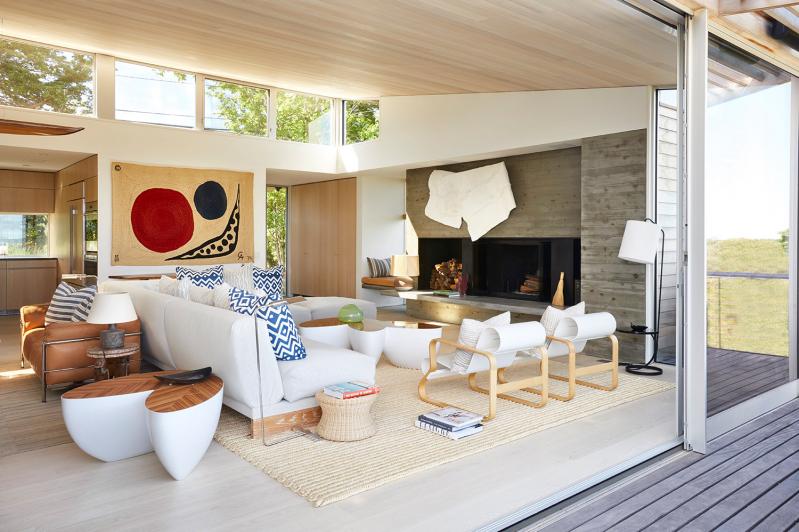As David Netto notes in the intro to an eponymous new book devoted to his design projects, he grew up steeped in interior design. His father owned the fabric firm Cowtan and Tout and he eventually enrolled (and subsequently dropped out of) Harvard's school of architecture.
He rebelled against a natural urge toward design and fought it hard, quitting at least three times, he says. "It was a very complicated and personal thing for me psychologically to come to terms with this career and this identity. But as you see, I am now committed."
The Amagansett homeowner is also a writer, with numerous design columns in publications like The Wall Street Journal and Town & Country, and recent books on the work of other designers to his credit. After having his own design company for more than two decades, it was time to say something about his own projects and his own aesthetic: a striking blend of modern and classic pieces that might be deemed eclectic. Yet that is a reductive term for the visual sophistication and intuitive layering he brings.
A skillful raconteur known for incisive observations and offbeat references, he will speak Saturday at East Hampton's BookHampton about the book and "the eclectic aesthetic" at 5 p.m.

Mr. Netto's book has chapters devoted to city residences, country dwellings, and idyllic and eccentric escapes. He includes one of his own homes, indicating the kind of environment he created for himself. Spoiler: Aside from an Alvar Aalto table and chairs he rescued from the great New York City swap meet that is the street on trash night, and which he might not have included in a client's project, not much else is different among the spaces in terms of his layering of eras, styles, and forms. In one room he balances his parents' old master drawings with an Yves Klein coffee table, an icon of modernist design, and more contemporary pieces.
As an only child of older parents who spent summers in East Hampton, Mr. Netto's reality was infused with the old movies he watched at home with them, he said. "I was left feeling that there was a choice available, a choice to not belong only to one's own time. I couldn't bear for all the things that interested me to have happened before I was born, so, like Wes Anderson, I just sort of stopped accepting it." In his work, he uses a sense of memory to animate his spaces.
The text and captions that accompany the illustrations are replete with his encyclopedic knowledge of great rooms, classic pieces of traditional and modern furniture, wallpaper and fabric patterns, and the work of renowned designers. A sample passage: "One day I showed the couple a picture of a really incredible pair of late-1930s Jean-Michel Frank chairs from the lobby of the Llao Llao Hotel in Patagonia to suggest we make copies of them."
Although he has written many of the introductions to each of the houses included in this monograph, he has asked some of his clients, many of whom have become great friends, to share their own experience of the process that led to their home's ultimate design.
Ever the insightful commentator, Mr. Netto offers this "teaching moment": "It's hard to think of something more important for decorators to remember than to know their place." He also notes that confidence in your taste and ideas need not be flashy. "You can be a great decorator without Martin Short having to play you in the movie. There's a whole school of being natural about this -- the more softly you speak, the harder people listen."
His rooms find balance in different ways. It is obvious that he designs rooms for the important pieces of artwork in them and not the other way around. There are times when he is spare but many others when he runs up to the limit. About taste, he says, "What happens to separate good taste from bad taste is very mysterious and perhaps none of my business." Instead, "It's about narrative -- what you put next to something, and the next three things you do after that. Good decorating is the alchemy of composition."
Registration for the talk is required on BookHampton's website. "David Netto," with illustrations by Mita Bland and lavish photography, was published by Vendome Press in September.




